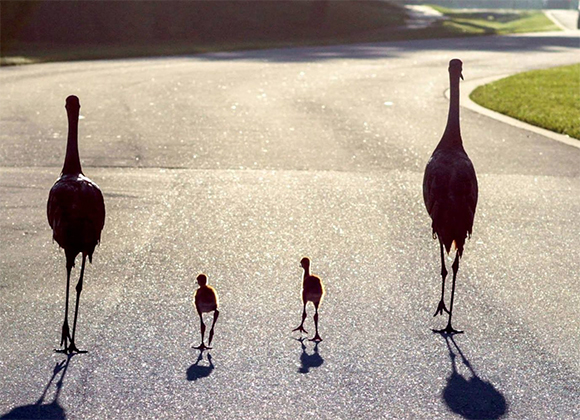PHOTO OF THE DAY: Judith Vaughn of Melbourne Captures Family of Florida Sandhill Cranes
By Space Coast Daily // April 29, 2016
can stand almost 4 feet tall when fully grown

Little is known about the survival and reproductive success of this state-threatened species in suburban habitats, so Florida Fish and Wildlife Institute researchers are in the early planning stages of a study that will compare how these cranes are faring in suburban versus rural areas.
Sandhill cranes are cherished members of the Florida ecosystem. They stand almost 4 feet tall and their bugling or rattling calls are haunting and beautiful. Sandhill cranes occur in pastures, open prairies and freshwater wetlands in peninsular Florida from the Everglades to the Okefenokee Swamp.
Florida sandhill cranes are present in many urban areas and some unlikely places such as golf courses, airports and suburban subdivisions.
This is probably due in part to the rapid development of their native habitat by humans. Cranes are probably attracted by the open setting (mowed grass) and availability of some foods (acorns, earthworms, mole crickets, turf grubs).
People inadvertently put them in harms way when they attract these birds to their yards with feed. Some “feeding” is accidental such as when bird seed is spilled from feeders by other animals onto the ground below making a nice feeding station for cranes. But, some people deliberately feed sandhill cranes.
In 2002, the Florida Fish and Wildlife Conservation Commission made it illegal to feed sandhill cranes.
CLICK HERE FOR MORE INFORMATION













